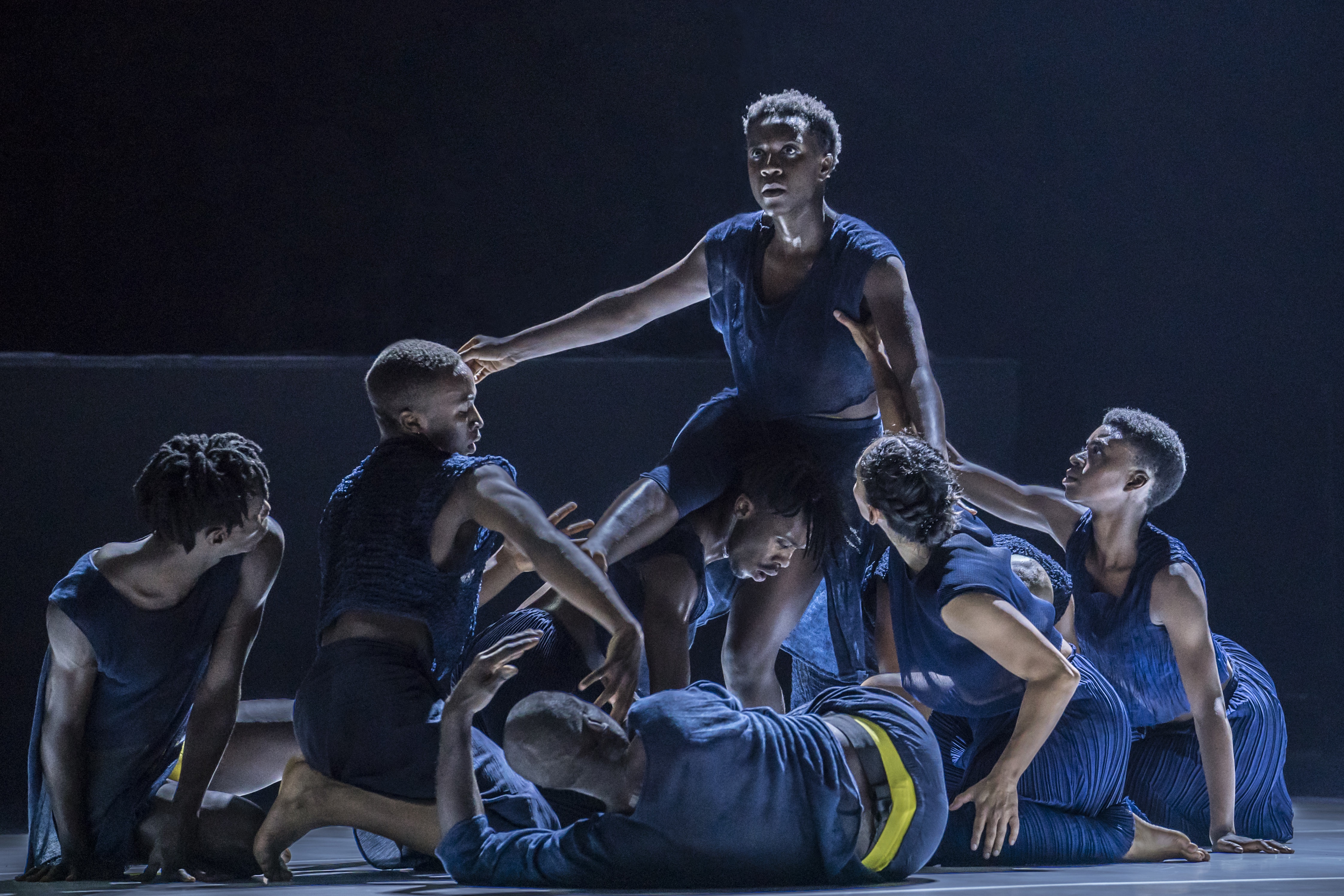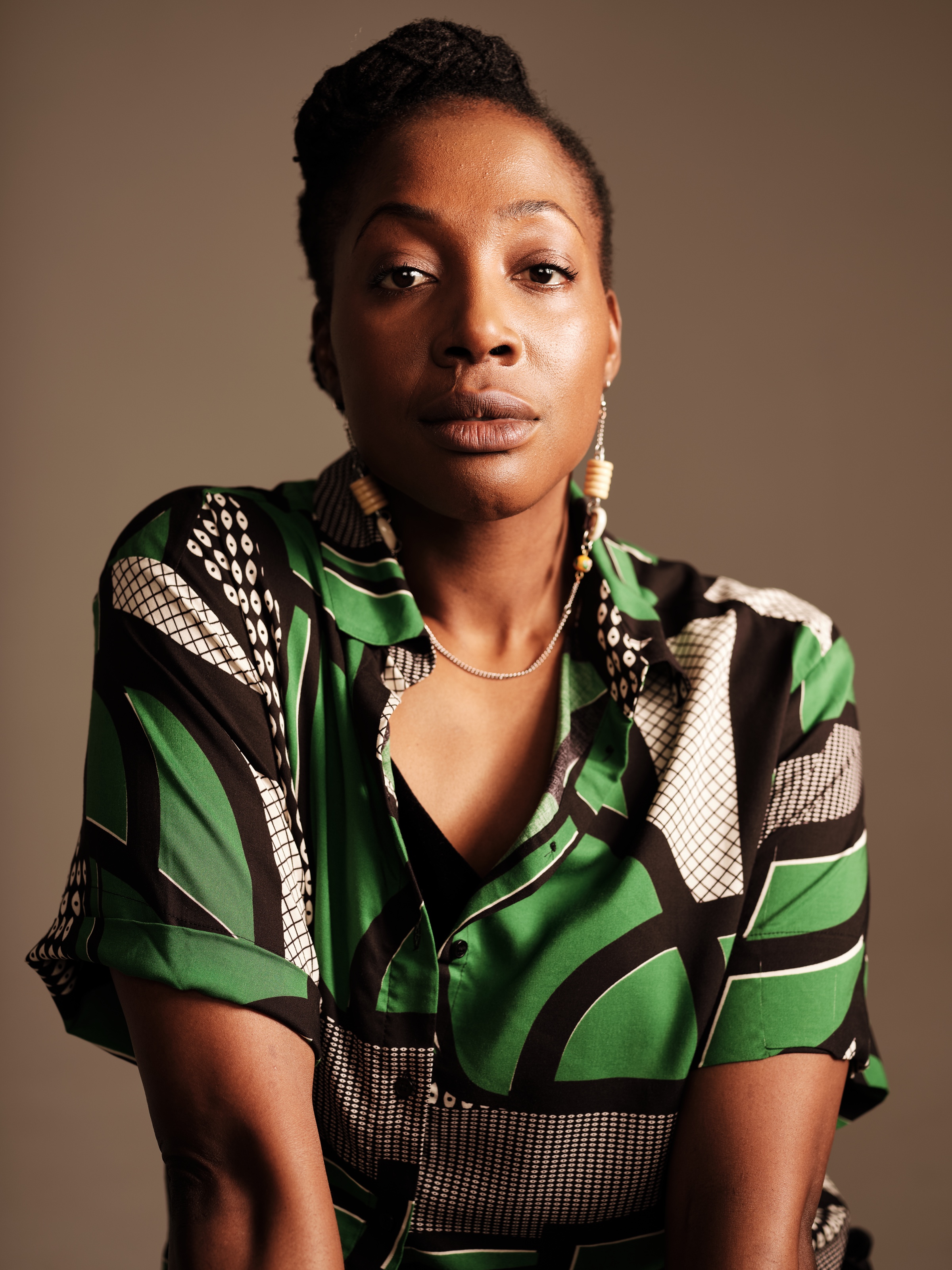Words by Stella Rousham
Acclaimed choreographer Alesandra Seutin talks to dance art journal about representation, technique and her work Boy Breaking Glass.
A brief glance through the Sadler’s Wells programmes demonstrates only too well the profound over-representation of a small minority of dance artists, companies and choreographers. The guaranteed Matthew Bourne slot at Christmas and Pina Bausch featuring at some point in the year. Programming is a process of exclusion, whereby the over-representation of some forces the erasure and silencing of others.
Erasure, invisibility and the power of memory are at the heart of Alesandra Seutin’s work Boy Breaking Glass, which premiered in 2018 as part of Sadler’s Wells’ 20th anniversary programme and is running again this year, beginning at the Riley Theatre, Leeds in October and continuing to tour at The Place, London and KVS BOL, Brussels.
As an international performer, movement director and choreographer, Alesandra has gained a reputation for creating thought-provoking and visually striking performances with her company Vocab Dance founded in 2007. As well as being a worldwide ambassador of the Germaine Acogny Technique and appointed co-Artistic Director of International Dance Centre, Ecole des Sables in Senegal, Seutin is currently serving as Guest Artistic Director of the National Youth Dance Company (NYDC).
Seutin’s work is distinguished by her cross-disciplinary, Afro-European movement style. Boy Breaking Glass, similar to her previous work, offers a powerful commentary on contemporary social, political and economic issues, using movement, voice and music to share stories, and spark much needed conversations.
SR: Would you like to give insight into Boy Breaking Glass?
AS: Boy Breaking Glass is my latest work. It is about giving visibility to and representing the voices of brown artists. Giving them an opportunity to have a voice and light to be seen. The piece is in memory to those artists who have come and gone.
SR: I was just reading about the work, and it was inspired by a poem of the same title by Gwendolyn Brooks (1987). When did you first come across the poem, Boy Breaking Glass? At what point did you think to use this as inspiration for the work?
AS: I was first asked to be part of a Triple Bill at Sadler’s Wells which made me think about who I am and my position in the UK. It made me look back at the past 21 years that I’ve been in London. I began to think about how there were many artists before me who had created their own legacy but had never been on the stage at Sadler’s Wells; a stage that everyone would love to be on but not everyone gets the opportunity to.
There’s always been this ‘ceiling’ that some people are granted to break. Certain artists in the dance industry have their names elevated to a certain point and their names will remain there. Their name will be in the history books, they will be on the internet, and they will have their legacies. But other artists who were at the same level have disappeared. It is almost like they plateaued and never broke through the ceiling. They never got the recognition that they deserved for their contributions. After researching themes of ceilings and breaking ceilings, I found the poem. This was in 2017. When I read the poem it suddenly clicked, it really spoke about this idea of invisibility.

SR: You can so clearly see the documenting of the same names, the same choreographers, whose movement will continually be retained and taught. It is a vicious cycle.
In the description of Boy Breaking Glass, you talk about the forgotten figures of history, this idea of ‘paving the way’. Why do you think it is important to uncover these lost figures?
AS: I think it is important because representation matters. For me, a little brown girl doing ballet in Belgium, I had never seen someone who looked like me on posters or represented as ballet dancers. Until one day, my jazz teacher — a Belgian white woman who I love dearly — asked my mum if she could take me to see Alvin Ailey. I remember when I saw them, I felt like my world changed, because suddenly I saw people who were excellent and who looked like me.
It is very important that a child that might be seen as “different” by society, has the ability to see others who look like them, so that they can have an aspiration. If you grow up in a context where the aspiration never looks like you, you can still aspire, but there’s always a sense of difference. I am aware that someone might see my work and be inspired because they feel like, she’s a brown woman and I am also a brown woman, and I can do this.
I’ve particularly noticed that companies of African or Caribbean dancers have disappeared — there’s not really anyone left. You used to have Adzido, a pan-African company, Irie had a company… you had Union Dance. But now, you would have never had known they had existed. That’s why interviews and documentation, like this, are so important for me. We don’t want to be forgotten as artists, regardless of where we are from, we need to be documented so we don’t disappear from time.
SR: I read the poem as well and found it quite abstract, so you can really interpret and apply it in so many different ways. What was the creative process of translating the imagery, words and language of the poem into movement like? Have you worked with poetry like that before?
AS: I work a lot with words. I write myself and I encourage dancers to write as well. I have a process in which I get dancers to write, to create their own imageries and then use those as a stimulus to create movement. For me, movement has to come from something, from feeling a sensation, a sound. I don’t really work with abstraction.
It took a long time to try understand the poem and other people’s perspectives on it. I focussed on getting the dancers to interpret what the poem felt and sounded like, drawing on both the internal sensations as well as maintaining an awareness of what’s going on in the world right now. I was keen to focus on looking at what’s around us — how do we survive as artists and find our own light in a system of hierarchies and positions? A system built with gatekeepers. And I know that I am also a gatekeeper in a way because I am an artistic director.
We are all on a continuous journey in this system. That’s why in the piece there is a theme of running and being on a track like an athlete. Sometimes you’re in a marathon, sometimes it feels like you are running with people, almost like a relay, sometimes you’re just running after something or being chased or pushed back. There’s a sense of trying to get something, a goal, in the piece. I used this image and metaphor lot when talking with the dancers. That we are all in our own lanes, sometimes you can share your lane with others, but in the end, you start by yourself and you end alone.
SR: I find it fascinating that the poem incorporates different senses and sensations of the body. Likewise, in a lot of your work you draw on a range of different dance styles, so in effect you’re really blurring the senses with dance genres. I just wanted to ask if you could explain the influences in your dance style and training.
AS: My style and training started with more Western styles — ballet, modern, jazz, and hip-hop — these were my foundations. When I came to the UK, I started developing what I would call modern techniques i.e., Graham and Cunningham.
I always thought that because I’m half African, African dance was not something that I needed to learn because somehow it was “inside” of me. That was my conception but I was totally wrong. When I finished my training, I decided I wanted to go to Africa, specifically the West, where I started training in Western African dance forms. Through this training I started to understand the richness and the amount of information that I missed out on, that could be very useful to the development of my own movement language.
The modern and Western techniques I had learnt are really rooted in how I work, particularly how I understand the mechanisms of the body. But in terms of the physicality, rhythm, pulse and texture, these are more connected to dance forms from the African continent.
My spirit is of a hip-hop dancer, my physicality has really adopted more of the African qualities, but my training is contemporary. So, my style is a fusion. And that’s a little of what I am too. My dad’s Belgian, my mum’s South African. There’s not one thing in the house, there are so many influences. I guess this is reflected in my movement too.

SR: I feel that in the main contemporary dance schools in the UK, you are told “technique” is ballet and contemporary. These categories are very rigid, and it does limit the possibilities that we have for movement and the body.
AS: Contemporary has some beautiful techniques and I really don’t regret learning them. I love Graham technique. But I think sometimes, the way it’s taught, we forget that these are tools. Techniques are tools for movement, not dance itself. It is a tool to understand how your body is moving, but you have to find an expression that is true to you.
Even as a teacher or working in National Youth Dance Company (NYDC) as a guest artistic director, I really stress the importance of seeing dance as movement. Dance is not just categories of technique. It is movement and the questions are: What does this movement mean to you? What is it expressing right now? Is it something that is expressing the weight of the world or is it something that is expressing openness? I’m not concerned with form and analysing movement in this way — this is a very British thing!
I find that contemporary dance taught in UK, especially ballet, can close the body and the way of thinking. That’s why I always say to dancers, once you learn a technique you also need to learn how to unlearn it. And once you understand a technique in your body, you have to then let go of it, to create your own thing,
SR: I really like that. I’ve never really thought of techniques being tools that you can use as you wish. I was very much taught that techniques are how you dance rather than using them to create your own way of moving.
That’s why I favour working with people who are either natural or self-trained dancers, who are less institutionalised. There’s still a freedom in their interpretation of these movements. I find the training in hip-hop also gives you more openness and versatility.
Keep up to date with Vocab Dance and Alesandra Seutin’s latest work:
Website: https://www.vocabdance.co.uk
Facebook: Facebook.com/vocabdancecompany
Twitter: @vocabdance
Youtube: youtube.com/vocabdancecompany
The 2018 Boy Breaking Glass cast list differs to this year’s. When this interview was published only images from the 2018 run were available. The 2021 cast is: Akeim Toussaint Buck, Isaac Ouro-Gnao, Nosiphiwo Samente, Rose Sall Sao, Moses Ward, Sean Graham.
Production Credits
Artistic Director and Choreographer: Alesandra Seutin
Composer: Randolph Matthews
Rehearsal Directors: Sadé Alleyne & Jo Leahy
Artistic Collaborator: Sophie De Vries
Lighting Designer and Production Manager: Salvatore Scollo
Original Costume Designer: Kimie Nakano
Musicians: Vidal Montgomery, Nicholas Hewlett, Stefano Ancora
